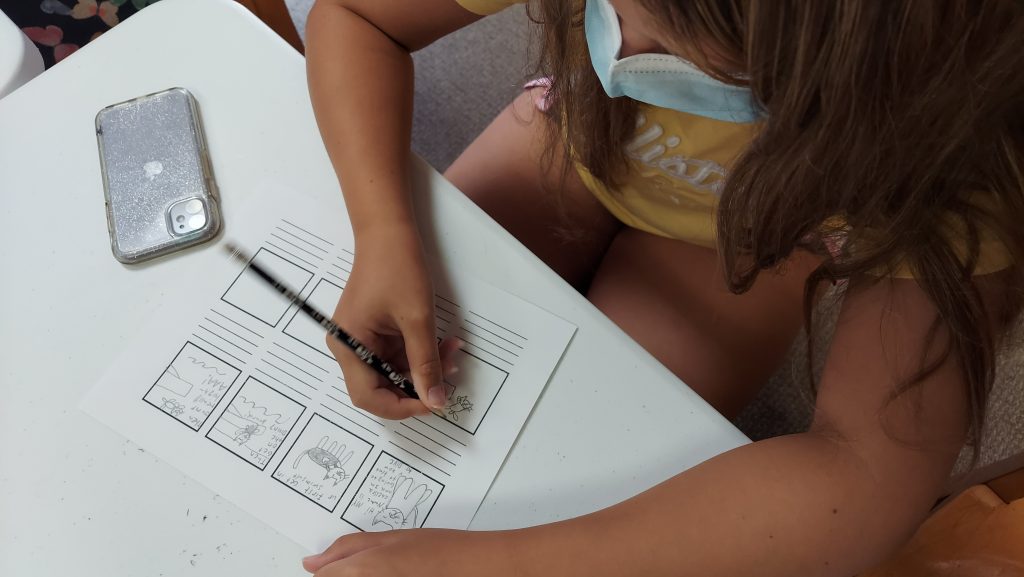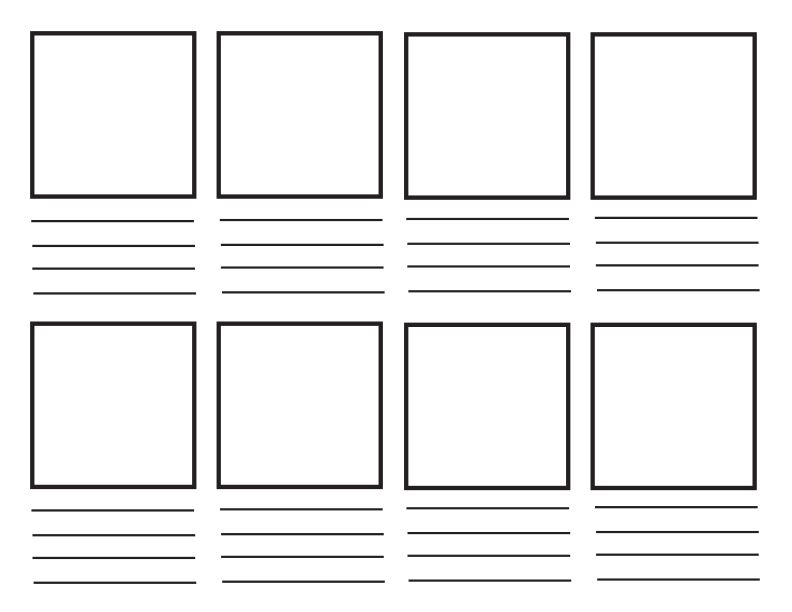
Presentation and Notes!
Start here, watch the slides and read the notes to learn about storyboards.
Lecture Notes:
Picture writing is the origin of all written language. For example: hieroglyphics, pictographs and cuneiform. -Comics are a contemporary example; however, they are the final product of what originated as an idea. That idea was most likely drafted as a storyboard.
Storyboarding:
A way of drawing and writing down ideas, generally within boxes (any shape or size) placed within an order that makes sense. Meaning, the boxes are placed in an order that makes sense for storytelling. These boxes contain symbols, pictures and text that help tell a story.
-Content within storyboards can be as simple as stick-figures and speech bubbles or as complex as diagrams, such as a brainstorming web.
–The purpose of storyboarding is to help us visualize ideas!
We are using them to help us see our ideas, which we can later turn into a completed project. These can be used for any medium, from short stories to videos. Many movies, comics, books and even podcasts start out as storyboards.
-They can even be used to help write reports or other school assignments!
Some things to keep in mind before storyboarding:
- Know the medium: is this for film, illustration, comics, etc.? This will determine how simple or how complex the storyboard is.
-For example: a storyboard for a video will include types of shots or frames, how subjects enter the scene, audio and lighting. Comics, on the other hand, includes text, spreads/design, panels and page breaks. - Anyone with any level of experience in writing or drawing can make them.
-They can be as simple as stick figures and symbols or complex mock-ups and paragraphs.
-Storyboards can be any length, from 2-to-2,00 boxes! - Storyboards are a tool to help brainstorm and visualize (i.e. see) ideas.
-Some ideas work on paper, but not necessarily in real life. For example: You might not have the CGI software or materials to make a house look like it’s getting crushed by a monster in a short film.
-So, while storyboarding you can either rewrite the scene, or decide to use practical effects that you have on hand (e.g. you would write in the storyboard that you set up a scale model of a house and crush it with a monster toy).
-Storyboarding is also meant to be a guide to get you from start to finish, and to help you brainstorm clear ideas.
-Essentially, once you know your idea for a story, movie, comic or whatever, storyboards help keep your ideas on track.
– In writing terms, a narrative is a story that has a beginning, middle and end. It can be simple or zig-zag in complex ways.
-Simple example: A person finds a treasure map, they take a boat to an island, they follow the map and find the treasure.
-Complex example: A person finds a treasure map, they journey through a forest to the sea, they meet a fisherman who takes them on their boat, they fight pirates on the way to the island, they follow the map to find the treasure only to realize they are on the wrong island…etc.
–The boxes (they can be any shape, not just squares) in a storyboard are the map for the story! They should be organized how we read: Left to right, top to bottom.
-However, there are no rules! If placing them in a web helps you visualize ideas better, than do as you please. Just make sure that the beginning, middle and end are clearly marked and that there are lines or arrows showing you how to read in order.
Reference Materials:
Scholastic Teacher Resources, “What Are Storyboards?,” an article excerpt from “Visual Tools for Differentiating Reading and Writing Instruction: Strategies to Help Students Make Abstract Ideas Concrete and Accessible,” by Roger Essley, Linda Rief and Amy Levy Rocci.
https://www.scholastic.com/teachers/articles/teaching-content/what-are-storyboards/
Activity:
Students should be asked to come make a storyboard for a short narrative. You can give them ideas or allow them to develop their own. They can work alone or in groups. 1-page storyboard templates should be provided, however, they can also be encouraged to make their own design if it suits them better.


